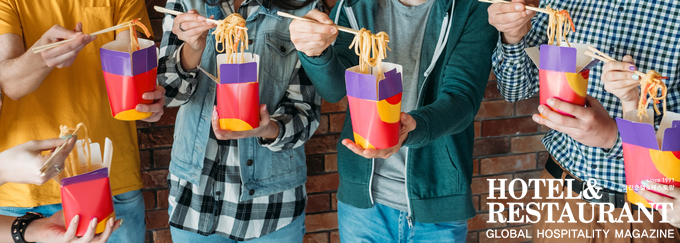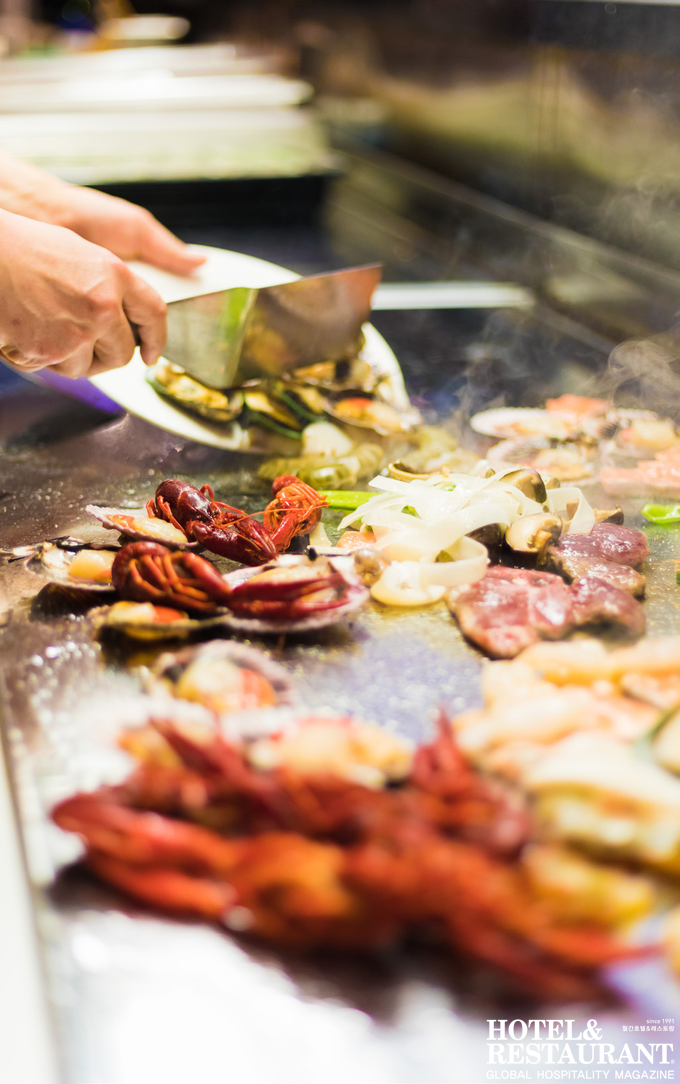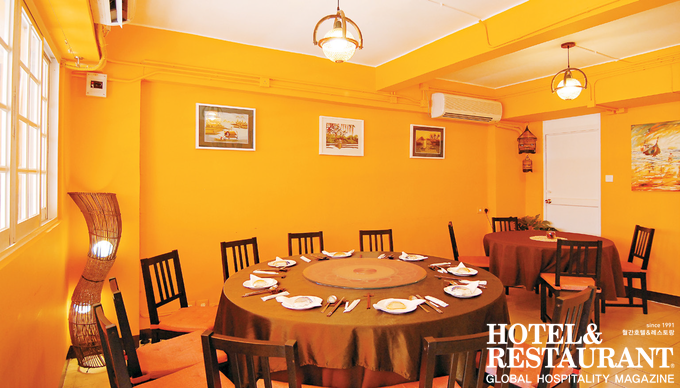
최근, 지난 3년간 운영의 어려움을 겪고 있었던 상하이와 베이징의 레스토랑 체인들과 2주간의 프로젝트를 마쳤다. 당시 매장 매니저와 팀원뿐만 아니라 본사의 직원들과 함께 방문했는데 이미 중국의 레스토랑들은 외식업의 거대한 변화에 휘말려 있었고, 빠르게 변화하는 소비자들의 니즈를 파악한 운영자만이 살아남을 수 있었다는 것을 여실히 느끼게 됐다.
마치 중국 레스토랑 업계는 운영자들의 현실이 그대로 드러나 있는 지뢰밭이었다.
경기 침체
중국의 전반적인 경기는 둔화됐지만 음식서비스에 관련해서는 연간 7%의 성장을 이루고 있다. 그러나 소비자들은 전체적으로 가라앉아 있는 경기에 외식을 줄이고, 외식을 하더라도 쉽사리 지갑을 열지 않게 됐다. 때문에 객단가가 70위안이 넘는 레스토랑이 패스트푸드점들에 비해 더 큰 타격을 입고 있었다.
몰 매장의 과잉 진출
베이징, 상하이, 선전과 같은 대도시에는 이미 쇼핑몰이 넘쳐나고 있다. 기존의 쇼핑몰들이 붐빌 때 쯤, 바로 그 옆에 더 큰 규모의 최신 쇼핑몰이 오픈한다. 이로 인해 기존 쇼핑몰에 입점해 있던 식당들은 임대비용이 계속해서 상승하는 동안 상당한 재정난에 시달리게 됐다. 인근 상권에 여러 쇼핑몰들이 들어선다는 것은 레스토랑에 핏빛 ‘레드오션’을 깔아주는 꼴이기 때문이다.
레스토랑의 초과 공급
전자상거래는 모든 소매점에 부정적인 영향을 끼쳤다. 여전히 고객은 의류 및 신발매장에 방문하지만, 직접 눈으로 보고 입어보고 싶은 것일 뿐 정작 구매는 오프라인보다 적은 금액으로 판매되는 온라인에서 이뤄진다. 이 때문에 많은 소매업체들은 시선을 온라인 비즈니스로 옮겨 오프라인 매장은 문을 닫고 있다. 여기에 대개 몰들은 소매점의 매출액의 비율에 따른 임대료를 받기 때문에 소매점이 힘들어지면 몰 전체도 힘들어지게 된다. 그런데 대부분의 몰은 고객 트래픽에 비해 두 배가 넘는 레스토랑을 들여온다. 수요공급이 일치하지 않는 시장은 매출이 부진해 현금의 흐름이 원활하지 못하고, 내려가지 않는 인건비의 부담으로 결국 망하게 된다.
배달 어플리케이션
엎친 데 덮친 격으로 앞선 상황에 이어 이제 어플리케이션까지 가담했다. 중국의 대표 배달 앱인 Meituan-Dianping과 Ele.me는 중국 내 음식 배달 시장의 80%이상을 장악했으며, 이미 그들만의 가격 전쟁은 시작됐다. 이들은 서로 시장 점유율을 더 차지하기 위해 모든 배달에 3위안 정도의 보조금을 지원하는 정책 경쟁을 치르고 있다. 그러나 이는 그들의 주요 투자자 Tencent와 Alibaba 간의 더 큰 전투의 일부일 뿐이다.
레스토랑의 경우 배달시장에 진입하려면 가격에 민감한 고객에게 어필할 수 있는 저렴한 금액의 식사를 제공해야 한다. 하지만 그렇게 되면 레스토랑 마진에 대한 부담이 커지기 때문에 대부분의 레스토랑들은 자체 내 배달 시스템을 활용하고 있다. 일반적으로 배달음식을 먹는 고객들은 음식의 질보다 가격과 편리성에 초점을 둬, 이러한 식문화가 증가할수록 고가의 레스토랑에 70위안에 버금가는 금액을 지불하는 이들은 점점 사라질 것이다.
사모펀드 현금으로 운영되는 레스토랑 체인의 성장
체인레스토랑의 성장은 대부분 점포 개발을 통해 급속도로 빠른 성장을 이뤄온 사모펀드 그룹으로부터 촉진됐음을 짚고 넘어가야 한다. 결국 체인레스토랑의 성장은 또 다른 공급과잉을 불러일으킬 뿐이다.
그렇다면 이 상황은 어떻게 타개해 나갈 것인가?
현실적으로 이와 같은 상황에서 살아남기는 매우 힘들다. 어쩌면 시장이 안정화되기 전까지 기다리는 것이 하나의 방법이 될 수 있다. 그러나 이미 중국 시장에 진출한 한국 레스토랑이 있다면 몇 가지 아래와 같은 조언을 하고자 한다.
- 만약 아직까지 배달 시스템을 도입하지 않았다면 빠르게 배달 시장에 진입, 주요 판매 동력이 될 수 있도록 조직을 재정비하라.
- 레스토랑의 메뉴와 가격을 자세히 들여다보라. 레스토랑의 마진과 식품의 품질에 크게 타격을 미치지 않는 선에서 고객의 니즈를 만족시킬만한 메뉴 재설계가 가능한가?
- 풀 서비스 레스토랑인 경우, 패스트 캐주얼 버전을 개발하던지, 간단한 메뉴를 만들어 배달 시장을 공략해볼 수 있는 ‘숨은 주방’을 만들어보자.
- 마지막으로 해당 지역과 지역 시장에 대한 이해 없이 레스토랑을 새롭게 오픈하는 것은 금물. 현재 베이징, 상하이, 선전에서 일어나고 있는 일이 1년 후에는 현재 새롭게 급부상하고 있는 지역에서 일어날 것임을 명심해야 한다.

China Restaurants Facing Big Challenges
I just came back to Hong Kong from a two week project in Shanghai & Beijing with a Chinese restaurant chain that has struggled the past three years. Visiting with headquarters staff as well as store managers and team members, it was clear that the market is in a state of massive flux and only those concepts which can adapt quickly to changing consumer behaviors will prosper going forward. It is a real minefield to navigate for all operators.

Economic Slowdown
The overall economy has clearly slowed but foodservice is still growing over 7% per year. However, consumers perceive there is a slowdown and are tightening their household budgets and spending less when eating out. Restaurants with average spending per person over 70 RMB are feeling the effects, while fast food concepts are less impacted given lower price points.
Mall Glut
Malls are overbuilt in Tier 1 cities like Shanghai, Beijing and Shenzhen. Older mall traffic suffers as soon as new malls open with the latest and greatest new retail concepts. Restaurants in older malls feel the impacts and struggle to get a decent financial return while rental costs keep rising. It is common to see multiple new malls open in the same trade areas creating a large “red ocean” for the entire restaurant industry.
Restaurant Over-Supply
E-commerce has negatively impacted all lifestyle retail in malls. Customers still go to malls to window shop for apparel and footwear but they look to buy the same item online for less money. Many lifestyle retailers primarily pay the malls percentage rent on sales so the mall revenues suffer as well. Many lifestyle retailers are also closing many of their shops to focus on the online business. In many cases, malls then double the size of their F&B concepts which creates too many restaurants for the customer traffic. In other words, demand and supply are not in sync creating negative same store sales for the F&B segment which leads to cash flow declines while labor and rent are unchanged or increasing.
The Delivery Apps
All of the above is enough of a challenge for any restaurant group but now there is the added problem of dealing with online delivery ordering. Meituan-Dianping and Ele.me control more than 80% of the total foodservice delivery market in China and are locked in a price war. They are subsidizing every delivery by as much as 3 RMB to gain market share and this is part of the larger battle between their main investors Tencent & Alibaba. If restaurants want to capture a slice of the delivery market then they need to offer discounted meals that appeal to these price sensitive customers, which puts further pressure on restaurant margins. Most delivery is done from the restaurants themselves and it is very common to see delivery drivers in front of restaurants waiting to pick up the order. Customers who order delivery are more concerned with price and convenience than food quality so this tends to hurt full service restaurants with guest checks higher than 70 RMB compared to lower priced concepts.
Restaurant Chain Growth Fueled by Private Equity Cash
It is important to note that much of the growth in chain restaurants has been fueled by investments by Private Equity groups who have bet on rapid growth through store development. Overtime this has also created an over-supply of chain restaurants in the market.
How to Survive in This Environment?
Surviving in an environment like this is very tough and it is probably not prudent to enter at this stage as a newcomer until the market settles down to a new normal. Here are some tips if you are a Korean restaurant group already deep into the China market.
- Get a delivery strategy fast if you don’t have one, and reorient the organization to putting delivery as a major sales driver.
- Look at your menu and cost of goods. Can you re-engineer your menu to create more value for your customers without sacrificing margin or food quality?
- If you are a full service brand, look at making a fast casual version or at least a “ghost kitchen” with a limited menu to take advantage of the growth in delivery.
- Finally, do not build new restaurants without rigorous analysis of the city and trade area. Tier 3-4 cities are less effected than Tier 1-2 cities with these volatile conditions, but you still may experience negative growth after the first year.

Joel Silverstein
이스트웨스트 호스피탤리티 그룹 대표
현재 홍콩에 거주하며 최고 경영진과 포춘 Fortune 500대 기업이 다수 아시아 국가에서 지속 가능한 성장을 할 수 있게 도와주고 있다.
- 2025.03.26(수)~2025.04.15(화) 대회·공모전 한국관광공사,‘관광기업 데이터 마케팅 컨설팅 지원 사업’공모
- - 2025.02.24(월)~2025.03.14(금) 대회·공모전 한국관광공사, ‘관광기업 혁신바우처 지원사업’ 공모
- 2025.01.20(월)~2025.02.14(금) 대회·공모전 지역여행 혜택 제공 서비스 ‘디지털 관광주민증’ 사업 지자체 공모
- 2024.11.05(화)~2024.11.11(월) 대회·공모전 서울특별시관광협회, 제27대 협회장 후보자 등록 실시
- 2024.10.25(금)~2024.11.07(목) 대회·공모전 "서울 관광산업 발전에 기여한 자를 찾습니다."…서울특별시관광협회(STA), 2024 서울관광대상 수상 후보자 모집
- [Joel의 Global Dining Market] 로보틱스, 자동화의 시대가 도래하다 2021-06-15
- [Joel의 Global Dining Market] 가상공간의 외식 브랜드 시장 속에 실재할 수 있을까? 2021-04-05
- [Joel의 Global Dining Market] 뉴노멀에 적응하는 식당가들의 새로운 전략_ 배달음식 전문점 2020-11-12
- [Joel의 Global Dining Market] 해외 진출의 관문? 홍콩 시장의 인기_ 외식업계 위기와 변화 면밀히 살펴봐야 2020-09-20
- [Joel의 Global Dining Market] 코로나19의 여파, 미국 외식 산업의 위기_ 더 좋은 음식과 더 나은 서비스로 고객 공략해야 2020-08-03
- [Joel의 Global Dining Market] 코로나19로 기세 오른 플랫폼 비즈니스_ 레스토랑과 상생하는 모델 모색해야 2020-06-02
- [Joel의 Global Dining Market] 아픈 손가락의 성장 필리핀 2020-04-20
-

[신운철의 세무전략] 음식점 창업, 부모님 지원받아도 세금 폭탄
- 2025-03-28
- 신운철 칼럼니스트
-

반얀트리 클럽 앤 스파 서울, 페스타 바이 민구 ‘강민구 셰프 페어웰 갈라디너’ 개최
- 2025-03-27
- 서현진 기자
-

한국이콜랩, 식음료 및 숙박업 대상 ‘레디도즈’ 청소 프로그램 출시
- 2025-03-27
- 서현진 기자
-

인스파이어의 사계절 실내 워터파크 ‘스플래시 베이’ 시설 재단장
- 2025-03-27
- 서현진 기자
-

[Hotel Proposal] 봄을 알리는 호텔 소식
- 2025-03-27
- 서현진 기자
-

[Dining Event] 가간 아난드 셰프, 10년 만에 정상 탈환...한국 '이타닉 가든' 최고 신규 진입상 수상
- 2025-03-26
- 안수진 기자





























